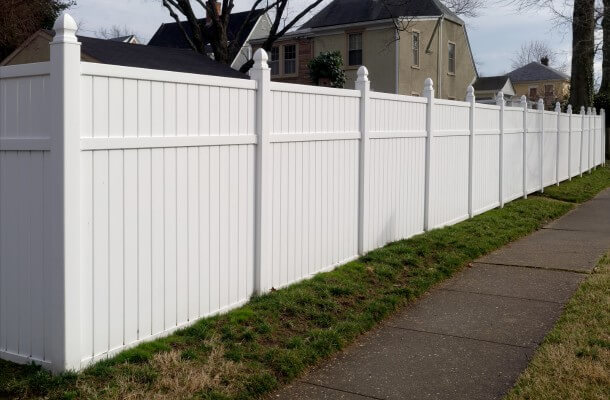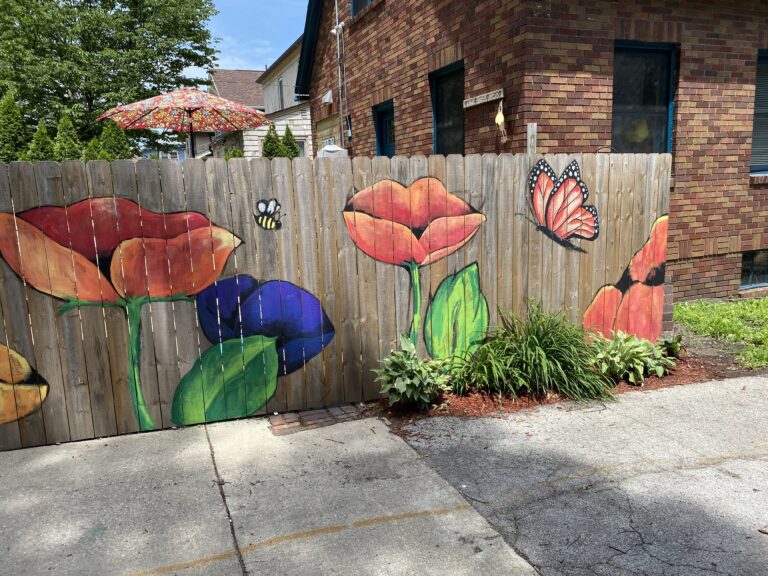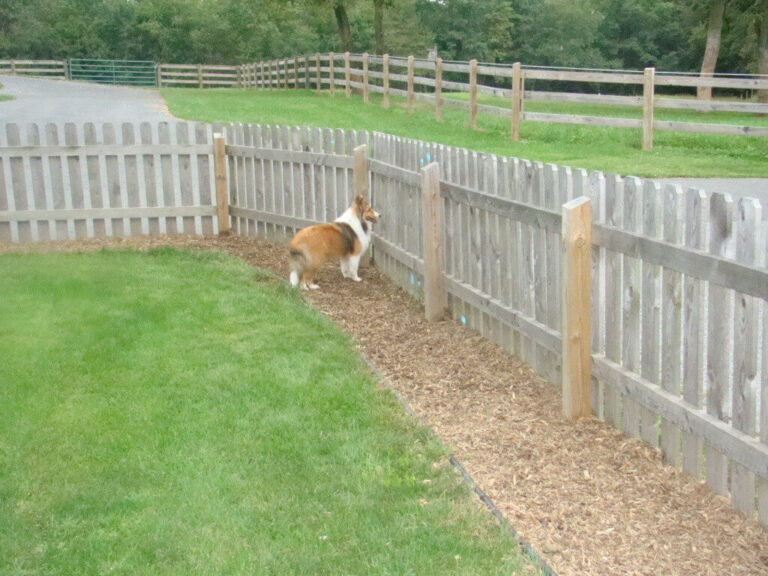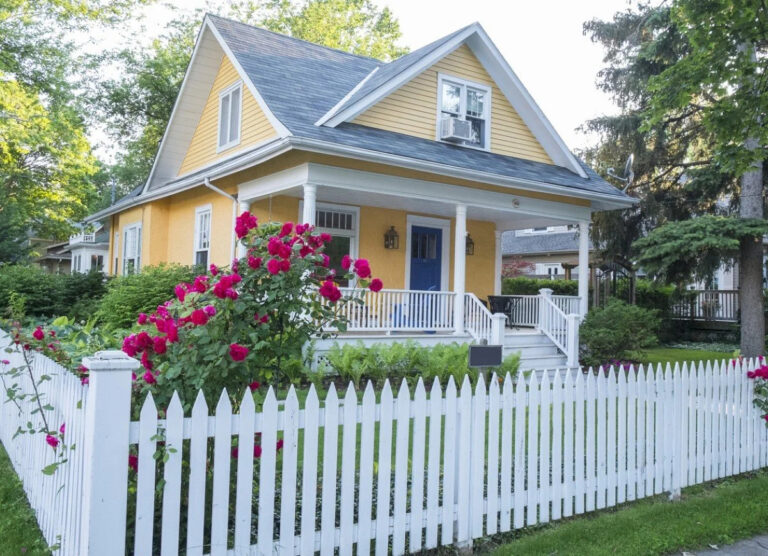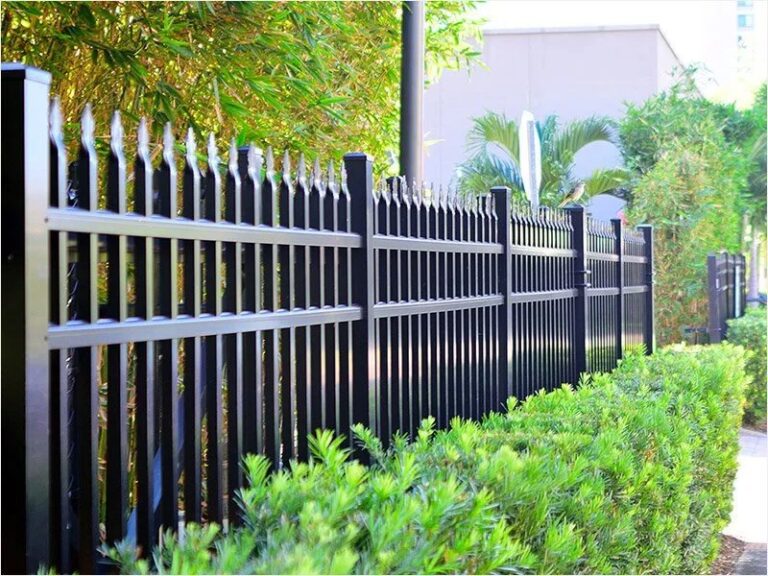Looking for a fencing guide for modern coastal landscapes? This guide covers the best fence materials and designs suitable for coastal environments, offering durability and aesthetic appeal.
When designing a coastal landscape, it’s essential to choose fencing materials that can withstand the harsh coastal climate, including saltwater exposure and high winds.
Vinyl, aluminum, and composite materials are popular choices for coastal fencing, providing both durability and resistance to corrosion.
Additionally, horizontal slat designs and open-grid patterns are recommended, allowing the wind to pass through without causing damage.
This guide will explore various fencing options, helping you choose the ideal solution for your modern coastal landscape.
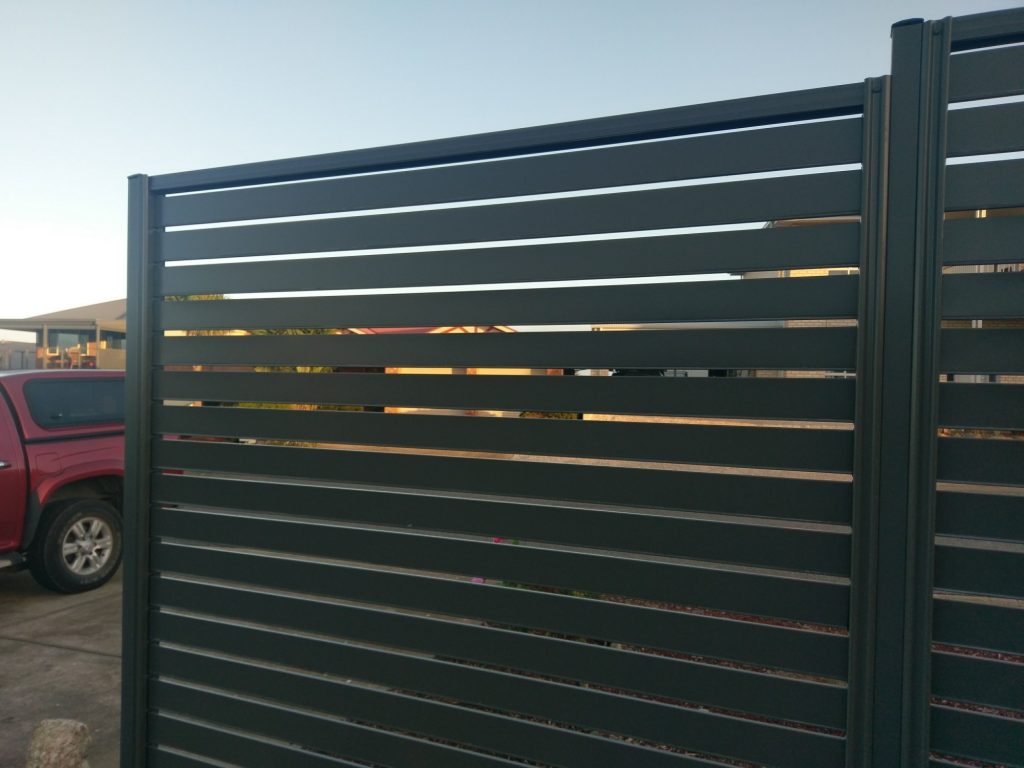
Fencing Materials For Coastal Landscapes
Fencing in coastal landscapes faces unique challenges due to exposure to saltwater, high winds, and constantly changing weather conditions.
Choosing the right fencing materials is crucial to ensure longevity and minimal maintenance. Here are some popular fencing materials suitable for modern coastal landscapes:
Vinyl Fencing For Low-maintenance
Vinyl fencing is an excellent choice for coastal landscapes due to its low-maintenance properties.
It is resistant to corrosion, mold, and mildew, making it ideal for areas with high humidity and salt exposure.
Additionally, it does not require regular painting or sealing, making it a durable and cost-effective option for coastal properties.
Aluminum Fencing For Rust Resistance
Aluminum fencing is known for its rust-resistant properties, making it highly suitable for coastal environments.
It provides a sleek and modern look while offering exceptional durability against the corrosive effects of saltwater.
Aluminum fencing is lightweight, making it an ideal choice for coastal landscapes with sandy soils and high winds.
Composite Fencing For Durability
Composite fencing offers a perfect blend of durability and aesthetic appeal for coastal landscapes.
Made from a combination of wood fibers and recycled plastic, composite fencing is resistant to rot, termites, and salt air, making it a durable and eco-friendly option for coastal properties.
It also requires minimal maintenance, making it an ideal choice for homeowners looking for long-term solutions.
Factors To Consider For Coastal Fencing
When it comes to coastal fencing, there are several factors to consider to ensure that it not only stands up to the unique challenges posed by coastal settings but also enhances the overall aesthetic of the landscape.
Weather Resistance
Coastal areas are prone to harsh weather conditions, including strong winds and heavy rainfall.
In order to withstand these elements, it’s crucial to choose fencing materials that are highly weather-resistant.
Durable materials such as aluminum and vinyl are excellent options as they are known for their ability to withstand extreme weather conditions without rusting or deteriorating over time.
Saltwater Tolerance
One of the primary challenges of coastal fencing is the exposure to saltwater, which can corrode and deteriorate traditional fencing materials.
Therefore, opting for corrosion-resistant materials is essential in coastal landscapes. Material choices such as stainless steel, galvanized steel, and PVC are popular options due to their ability to resist corrosion caused by saltwater exposure.
Aesthetic Appeal
While prioritizing functionality and durability is crucial, coastal fencing shouldn’t compromise on aesthetic appeal.
Opting for materials that not only offer resilience but also complement the natural beauty of the coastal landscape enhances the overall visual appeal.
For example, natural wooden fencing, composite materials, or powder-coated aluminum can provide a pleasing aesthetic while offering the necessary durability.
Installation And Maintenance Tips
Discover practical installation and maintenance tips for fencing in modern coastal landscapes.
From selecting durable materials to proper anchoring methods, this guide offers essential advice for creating a resilient and stylish coastal fence.
When it comes to creating modern coastal landscapes, fencing becomes an essential element for both aesthetic appeal and practicality.
To ensure the longevity and functionality of your coastal fence, it is crucial to pay attention to the installation and maintenance process.
From addressing the challenges of sandy soils to implementing regular cleaning and sealants, these tips will help you maintain a durable and visually pleasing coastal fence.
Proper Foundation For Sandy Soils
Sandy soils present unique challenges for fence installation. When installing a coastal fence, it’s essential to provide a proper foundation that can withstand the shifting nature of sandy soils.
To achieve this, consider using steel or aluminum posts, which offer increased durability and resilience in sandy conditions.
Additionally, supplementing the foundation with concrete footings can provide added stability and prevent the fence from leaning or shifting over time.
Regular Cleaning And Inspection
Coastal environments are prone to exposure to salt, moisture, and wind, leading to potential corrosion and wear on fencing materials.
Implement a regular cleaning and inspection routine to maintain the integrity of your coastal fence.
Use a mild detergent and water to remove salt residue, debris, and grime. Regularly inspect the fence for any signs of rust, corrosion, or loose components, addressing these issues promptly to prevent further damage.
Sealants For Prolonged Lifespan
To enhance the longevity of your coastal fence, consider applying high-quality sealants specifically designed for coastal environments.
These sealants create a protective barrier against salt, moisture, and UV exposure, ultimately prolonging the lifespan of the fence.
Prioritize sealants that are resistant to corrosion and fading, and apply them as part of regular maintenance to ensure the continued resilience of the coastal fence.
By following these installation and maintenance tips, you can ensure that your coastal fence not only complements the modern landscape but also withstands the unique challenges posed by coastal environments.
Proper foundation construction, regular cleaning and inspection, and the application of suitable sealants are integral to preserving the functionality and aesthetic appeal of your coastal fencing investment.

Frequently Asked Questions
What Is The Best Fencing For Coastal Areas?
The best fencing for coastal areas is made of materials resistant to corrosion, such as aluminum or vinyl.
These materials are durable in salt-laden air and moisture. Additionally, consider installing a fence with minimal gaps to reduce wind resistance and increase longevity in coastal environments.
What Is The Best Fence For Windy Areas?
The best fence for windy areas is a sturdy, high-quality material like vinyl or composite. These materials are durable and can withstand strong winds without getting damaged.
It’s important to choose a fence design that allows the wind to pass through, such as picket or slatted styles.
What Is The Best Material For Beach House Fence?
The best material for a beach house fence is vinyl or aluminum. Both are durable and low maintenance, perfect for seaside conditions.
They also offer a sleek and modern look and can withstand saltwater and harsh weather.
Conclusion
To sum up, designing a coastal landscape with a focus on modern fencing can transform your outdoor space into a stunning and functional sanctuary.
With the right materials and a thoughtful approach to style, you can create an inviting and sustainable environment.
Consider the tips in this guide to elevate your coastal fencing design with ease!


